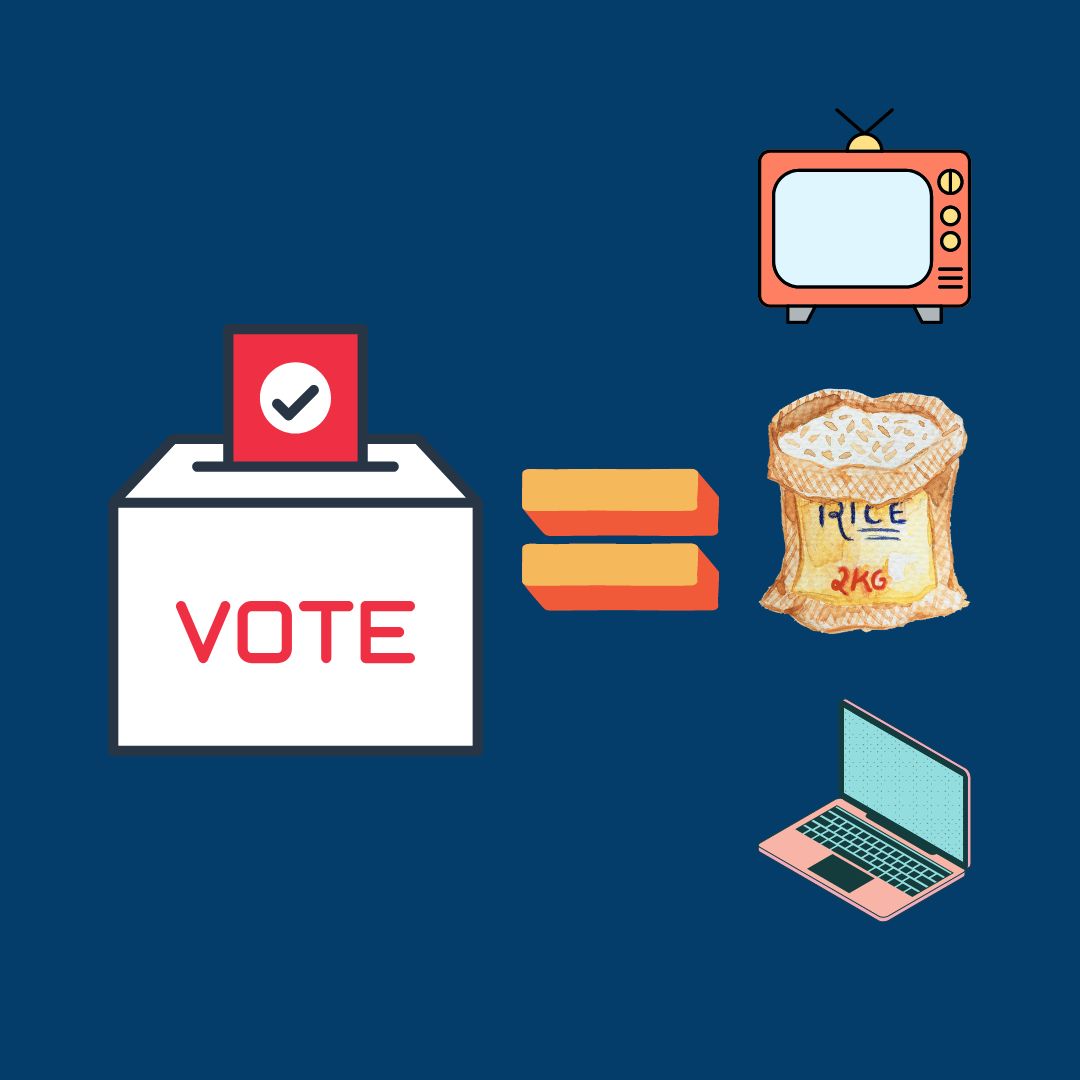1967 Madras state assembly elections is a remarkable one to quote in the history of Indian politics. Why? Because this was the first time the country witnessed the entry of freebies. During this election, Dravida Munnetra Kazhagam (DMK) led by C N Annadurai won 137 of 174 seats contested. And the coalition together won 179 seats defeating the Congress Party. The major narrative of this election was anti-hindi agitations and the advent of freebie culture in Indian elections i.e., DMK promised 4.5 KG Rice for Re. 1.
Similarly, DMK announced 1 KG Rice for 1 Rupee as an election manifesto in 2006 assembly elections too along with free television, gas stove etc. Jayalalithaa on the other hand announced more lucrative freebies to lure voters to her side. At the end, 1 KG Rice for 1 Rupee brought DMK back to power.
2006 could have still been the end of this freebie culture. 2011 turned out to be more competitive wherein AIADMK led by Jayalalithaa went on to offer 20 KG free rice bag. Even more lucratively, she offered free laptops to students, Jersey Cows to farmers, free Mangalsutra (Gold) and more. This attracted more votes to AIADMK and a landslide victory.
Freebies all the way
However, this was not the case with Tamil Nadu alone. State assembly elections across India are now widely witnessing the rise in freebie culture. This ranges from free ration, free electricity, free bus travel for women, free smartphones, free laptops and what not.
Recently concluded Madhya Pradesh assembly elections (2023) became a playground of freebies and subsidies where BJP and Congress competed with each other in announcing freebies.
For the upcoming general elections too some political party manifestoes (again from DMK and AIADMK) are more focussed towards freebies. Some of them include Rs. 1000/- for women across the country every month, reduction in LPG prices of Rs. 500/-, and reduction in Petrol (Rs. 75/-) and Diesel (Rs. 65/-) prices too.
AIADMK led by Edappadi Palaniswami is promising Rs. 3000/- for women, 50 per cent concession on long distance train fares and increase in daily wages for workers under MGNREGA scheme.
Feasible?
However, what these parties do not understand is that the sheer economic impact of offering freebies. According to macroeconomic principles, an increase in government spending will make way for consumer spending, which in turn increases economic activity in a nation. This means if someone is earning Rs. 1000/- a month of which Rs. 900/- goes on spending for essentials. Therefore, government through subsidies or freebies might actually reduce the burden of spending on essentials which leads to more consumer spending in the market.
However, if these subsidies are funded through debt rather than government revenue, then the state is gradually weakening the nation’s growth prospects. In due course, entire nation will fall into a debt trap like what Sri Lanka faced in 2022.
Unfortunately, most of these are funded through debt. Therefore, most of the freebies could eventually land the entire nation into a debt trap. And as adding more fuel to the burning fire, some states namely Tamil Nadu, Telangana, Andhra Pradesh and Kerala have borrowed beyond their targeted borrowing limits.
Impact of Freebies on the Economy
To absorb the shock of the pandemic, central government borrowed to fund its fiscal spending to boost demand in the market. Fortunately, increased Foreign Direct Investments (FDI) and increased domestic economic activity until last year kept the country on a stable track. However, with the withdrawal of long term investments, a slowdown in FDI in 2023 weakened India’s growth prospects fruther. This means India has to encourage more FDI inflows into different sectors (especially manufacturing) in the next few years to sustain the targeted growth momentum.
Politics vs. Economics
While political parties claim that freebies make way for poverty alleviation in a short run, economists fail to agree with the same.
A recent feature of former Reserve Bank of India (RBI) Governor Dr. C Rangarajan in a leading business daily states that poverty has reduced due to increase in social security schemes since 2011-12.
However, Raghuram Rajan, another former RBI Governor said in an interview that freebies might help in offering essentials to poor households on a consistent basis and support their nutrition requirements. However, when it becomes a competition between states such as who is offering more, that is when we begin bankrupting the system.
His statement is more of an indicator of IMF’s recent warning to India which states that the nation’s debt-to-GDP ratio might exceed 100 per cent. As of 2023, India’s general public debt-to-GDP ratio stood at 84 per cent. And the overall debt of the states together stood at 28 per cent of the GDP. In simple terms it means, there is a heavy debt (borrowed by the state governments) on every Indian’s head.
Obstacle to Growth
These elevated debt levels are seen as an obstacle for the country’s economic growth. Therefore, adding more debt would mean not achieving sustained economic growth in a long-run. However, nothing can stop freebies in the near term as political parties are getting more ambitious. Hence, it is upto every single citizen to rationalize and think before voting for a party based on freebies.
As a nation India has come a long way. Going forward, we have bigger ambitions too i.e., to become a world super power by 2047. If the debt frenzy of our states continue, then we would hardly achieve our beautiful vision on our 100th year of independence.






Leave a Reply